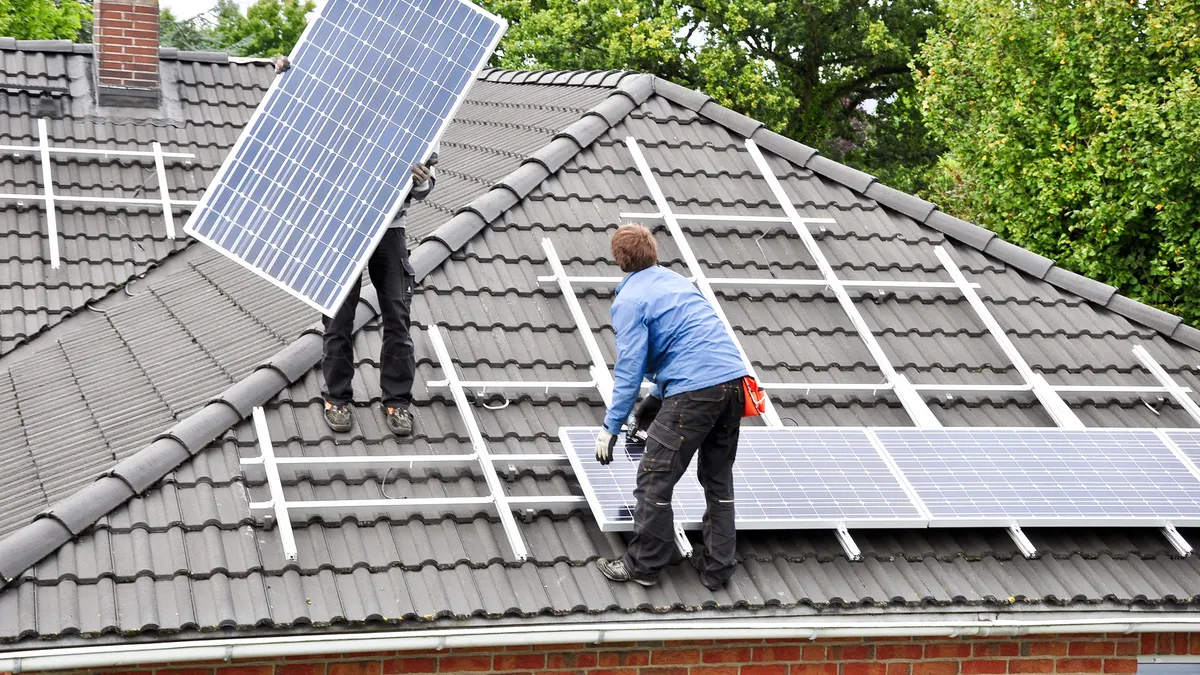Are solar panels a green status symbol?
A new study finds strong linkage between one home's solar panel and the likelihood another nearby will go green. Known as peer effects, the upshot is simple: "In some sense, it's the 'Keeping up with the Jonses' idea," said Kenneth Gillingham, a co-author on the study.
Gillingham is an assistant professor of environmental and energy economics at the Yale School of Forestry & Environmental Studies. The study, published in The Journal of Economic Geography, could help a range of solar advocates better target their efforts, from utilities and regulators to third-party installers.
"Green envy" is Gillingham's favorite way of explaining it. Or perhaps, "conspicuous conservation."
"People see their neighbors who are doing things that are green, and they are inclined to do it themselves," he said.
The study follows similar research in California, which reached similar conclusions. But the new work, Spatial Patterns of Solar Photovoltaic System Adoption: The Influence of Neighbors and the Built Environment, also looks at how the peer impacts diminish across time and distance and could potentially effect how installers advertise or the ways a solar community group might organize.
What the study found
Gillingham and his colleagues looked at Connecticut, where there is significant data on solar installations.
The state government "has been very supportive of promoting solar PV technology, with several ambitious state programs," the study noted. Connecticut has a renewable portfolio standard mandating 23% green power by 2020 at the utility level. And the Connecticut Clean Energy Finance and Investment Authority (CEFIA) has been required by state law to develop programs leading to at least 30 MW of new residential solar photovoltaic by the end of 2022.
"We find clear evidence of spatial neighbor effects ... from recent nearby adoptions that diminish over time and space," the study said. "Adding one more installation within 0.5 miles of adopting households in the six months prior to the adoption increases the number of installations in a block group by 0.44 PV systems per quarter on average."
Peer effects diminish over time, the study noted, and the findings suggest previous installations have less impact "on increasing the likelihood of new installations as time goes on. After a year or two, households are likely to already be aware of previous installations and thus would be less affected by them," the research shows.
The results also show that the peer impacts diminish in urban areas or areas with a high number of renters, but that result is not entirely consistent. The study noted a "cold spot" for peer influence in one of the more wealthy areas of Connecticut.
"These initial results do not mean that income plays no role in the adoption process," the study said. "Rather, it suggests that policies aimed solely at lowering the cost of PV systems are not enough, and policymakers need to undertake other efforts in order to spread the adoption of PV systems."
Putting the findings to use
The study's findings are fairly complex, with talk of spatial diffusion and "a wave-like centrifugal pattern" of solar's spread. But the real-world applications are likely a bit simpler, Gillingham said. "It works in two ways. Social learning, where people talk to one another. And the second is observability," he explained.
Solar installers, for instance, put up a sign in front of a customer's home indicating they've chosen to install panels. "That now one of the first things installers now do to try and leverage these neighbor effects," Gillingham said.
And if a utility is trying to promote solar, then it can develop programs which will leverage the neighborhood effects. "A utility could partner with a state agency or grass roots organizing group, on a program that has a whole set of components that are specifically designed to facilitate these neighborhood effects," Gillingham said.
CEFIA, for instance, has designated "Solarize" towns that choose a preferred installer, pair a grassroots education campaign with local advertising, and receive group discounts on installations. Gillingham said programs can also use "solar ambassadors" who essentially connect with peers to discuss going solar. By connecting the right type of outreach to geographic area, "solar can spread, in a sense, like a contagion," Gillingham said.















